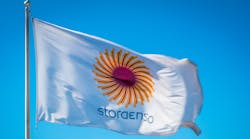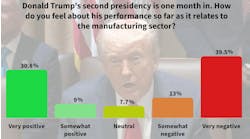Once a leader in its field, by the mid-2000s, the Scandinavian paper giant Stora Enso had hit a wall. With the shift from print to online publishing and the shrinking demand for paper, company leadership spent four difficult years, starting in 2007, engaging in several rounds of cost cutting—divesting mills and laying off workers—to stabilize the situation. It worked. But then they faced the challenge of shifting gears to innovate and create new growth markets.
In early 2011, the nine-person team—all male, all Nordic, all paper industry veterans—realized they were ill-equipped to ask the sort of heretical questions needed to reinvent the company. Jouko Karvinen, CEO at the time, recalled a particular meeting: “I sat there listening and realized that all of us were telling the same old stories, over and over again.”
Karvinen understood that they needed to bring diverse perspectives into the conversation. But instead of taking the conventional route of hiring consultants with ready solutions, he approached the International Institute for Management Development (IMD) in Switzerland—to help Stora ask better questions, boost its imagination capability, and co-create a solution.
Reimagining the Future
The initial insight was to establish a “shadow cabinet,” drawing on the next generation of leaders at Stora Enso to help the top team challenge their existing assumptions and envision new opportunities. After a series of discussions with IMD, however, company leadership agreed to a more radical approach. Why focus on only the usual suspects for help? Why not open up the opportunity to all employees? As former HR chief Lars Häggström put it: “We wanted to have people who were passionate about pushing the boundaries and who question[ed] literally everything.”
With that in mind, they posted an ad on the company’s intranet inviting all comers to apply to the Pathfinders program. The ad triggered 250 applications, and after a battery of assessments and interviews, 16 people were finally selected. Significantly, they included recent hires as well as established employees, and they represented a much broader mix of demographics, hierarchical levels, experiences, and personalities than would normally have comprised this team. Several of those selected were not even on the radar of the company’s talent-screening system. Though the group was eclectic, its members shared a genuine appetite for change and were far better suited to think laterally than the incumbent decision-makers.
To help feed their minds and enrich their perspectives, group members were sent across the globe for six weeks, from China and India to the U.S. and Latin America. To help free their minds, they were symbolically fired from the company—then rehired with a new mandate to challenge the company’s mindset and ways of working. IMD also created a custom program to expose them to new conceptual frameworks and enable them to conduct deep market-insight studies when visiting companies.The name Pathfinders, a nod to the Mars space exploration mission, gave the group a clear identity and captured its mandate, which was to discover new ways forward—to explore global trends and alternatives without being weighed down by Stora’s long heritage, to bring back insights from companies inside and outside their industry, and to identify opportunities that were falling in between the company’s silos.
Said Karvinen: “I want a revolution. I don’t want PowerPoint presentations giving advice about what we could do. I want them to come back with ideas that we can implement . . . to start up a new business.”
Ultimately, the Pathfinders engaged the top team in profound and impactful conversations and made many strategic recommendations that were adopted. Their input proved so valuable that the initiative was renewed on an annual basis and redubbed “Pathbuilders.”
One recommendation that was acted upon was related to where the new growth markets should be. While sustainability was already an area of focus, the Pathbuilders pushed for sustainability and renewable materials to be at the very center of the strategy, claiming that there was significant growth potential in this space. To grow this area faster, they made several recommendations, like putting a head of sustainability on the executive committee and accelerating R&D for renewables both internally and with partners. This contributed to Stora Enso’s later making “the renewable materials company” its brand. In Pathbuilders programs in later years, new partcipants were tasked with building the company’s future direction and coming up with ideas that would continue to push the boundaries of the organization, address pressing business challenges, develop new businesses, and shake up the company’s internal organization.
Breakthrough Changes
Eight years later, the Pathfinder/Pathbuilder program’s impact on innovation has been immense, transforming Stora Enso from a traditional paper-and-board producer to a global renewable materials company. Its strategic focus has shifted to new value-creating areas like fiber-based packaging, innovation in biomaterials, and bio-based chemicals. In the same period, its share price has tripled, and two-thirds of sales (and three-quarters of profits) now come from the growth businesses.
Beyond the focus on results, the program has also reshaped the entire company culture—as evidenced by surveys showing that employees are more engaged and innovative than ever before. Moreover, the self-selection mechanism reenergized the workforce. It was seen as a sign of trust in the employees and a chance for anyone to have an impact. Of those who served as Pathfinders or Pathbuilders, more than 70% were promoted or changed positions within six months of completing the program.
This is an innovation legacy that is now built into the company’s future leadership.
This article is an excerpt from ALIEN Thinking: The Unconventional Path to Breakthrough Ideas(PublicAffairs; March 16, 2021) by Cyril Bouquet, Jean-Louis Barsoux, and Michael Wade.




